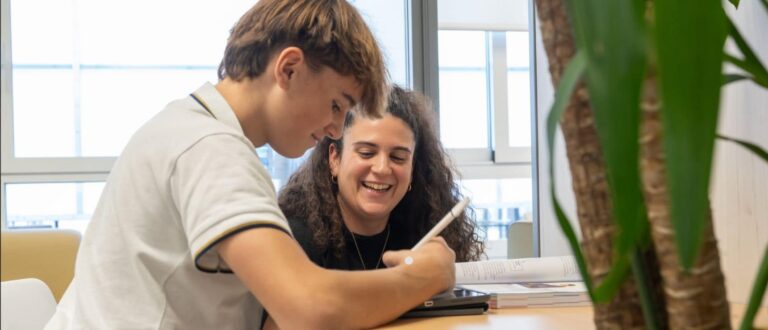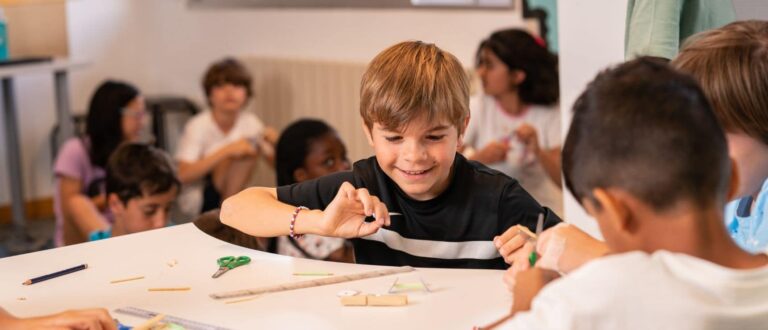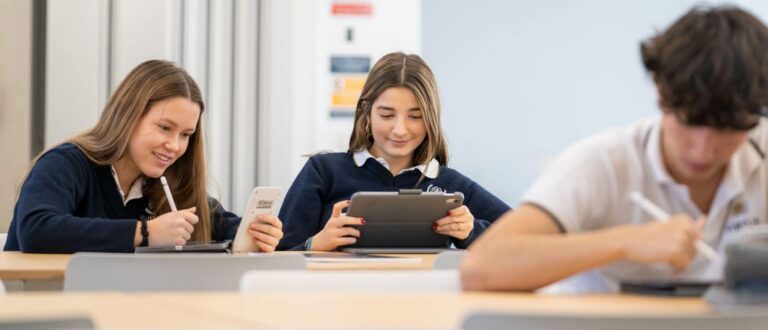Several parents’ groups have complained of overcrowding in the classrooms where their children study. Education under these conditions is not student-friendly, as it’s less personalised and delivered in a generic way to all students. What are the major problems posed by overcrowding in classrooms?
What is the maximum number of pupils per classroom?
One of the main factors that ensure the quality of education in schools is the number of pupils per class.
While it is indeed true that the average class size in all schools has decreased over the years, overcrowding in classrooms still remains an issue.
That’s why there are limits of a maximum of 25 pupils per class in primary education and 30 pupils per class in secondary education in Spain.
Nevertheless, a maximum of 25 pupils per classroom is still a very high number.
During class time it’s very difficult for teachers to meet each of the 25 students’ needs individually, so the focus ends up being generalised rather than individual.
Consequences of overcrowding in schools
Having large numbers of students in classrooms leads to major problems in educational development, as they end up becoming mere numbers.
Personalised attention
Not being able to provide individual attention to each student makes it difficult to identify and work on what they need.
If teachers are unable to know what their group needs, then these pupils won’t be able to work on and improve those aspects that most need improvement.
Being able to work personally with students is essential in their educational development, as it will facilitate and enrich the learning process.
A lack of personalisation results in a lack of specific help and support.
Some students sometimes tend to “fall behind” while the rest of their peers move forward.
And similarly, those students who excel will also be at a disadvantage if they need a faster pace.
This is a problem that many students face during their academic development, which, in the long run, often leads to a lack of basic knowledge and subsequent difficulties in performing in certain subjects.
For example, if a student hasn’t received the necessary support in mathematics and has difficulties in this area, there will come a time when they won’t be able to make progress in the subject due to a poor foundation that hasn’t been developed.
Conversely, if the same student had attended smaller, more personalised classes, where the teacher had the opportunity to focus on them individually, their grades wouldn’t be the same.
Study techniques
Closely related to personalisation, overcrowding in classrooms also makes working on study techniques more difficult.
Every student is different and should therefore have their own study techniques adapted to their needs and abilities.
In classrooms with a high student to teacher ratio, they all generally use the same study technique, which doesn’t necessarily work for them all in the same way.
Just as it’s necessary to get to know individual learners, it’s also vital to monitor them regularly during the education process.
In this way, study techniques are updated and adapted over time depending on the student’s development.
Lack of attention for special educational needs
There are many occasions when special needs are not addressed, but may not even be identified.
One of the reasons why these special needs are difficult to detect and work on is the lack of participation in the classroom.
Students often don’t get the opportunity to participate in lessons, making it difficult to identify students with special needs
When there are so many pupils in a class, teachers often focus their attention on explaining the lesson, neglecting the educational development of the pupils themselves.
In classes with at least 20 pupils, working on the individual difficulties each of them face may become a challenge for the teacher.
For example, a student with Attention Deficit Disorder (ADD) may not receive the attention and support they need to succeed in school.
Motivation issues
All this leads to a lack of motivation among pupils, which also hampers educational development.
Students can often feel that they’re not enough hence blaming themselves, when the issue often lies with the less than conducive educational environment they have to deal with.
A lack of motivation can also be caused by the Pygmalion effect, where the pupil ends up behaving in line with the tutor’s expectations of them.
If the tutor doesn’t listen to the student and the student doesn’t achieve good results, they’ll stop making an effort because they feel they can’t succeed.
“Man often becomes what he believes himself to be. If I keep on saying to myself that I cannot do a certain thing, it is possible that I may end by really becoming incapable of doing it. On the contrary, if I have the belief that I can do it, I shall surely acquire the capacity to do it even if I may not have it at the beginning”. (Gandhi)
This problem wouldn’t exist if tutors could focus on each of their students individually, involving them in their education and motivating them through one-to-one support in the classroom.
At Virtus, The British Sixth Form College, we pay special attention to personalisation in the classroom, with an Average of 5 students per class, maximum of 9.
This individual approach is made possible thanks to the small number of pupils we have in each classroom, which allows both tutors and the rest of the educational team to get to know each and every one of them.
Through personalised tutoring, project-based learning, the implementation of flipped learning, and individualised study techniques, we put our pupils at the centre of their education at our British school.






